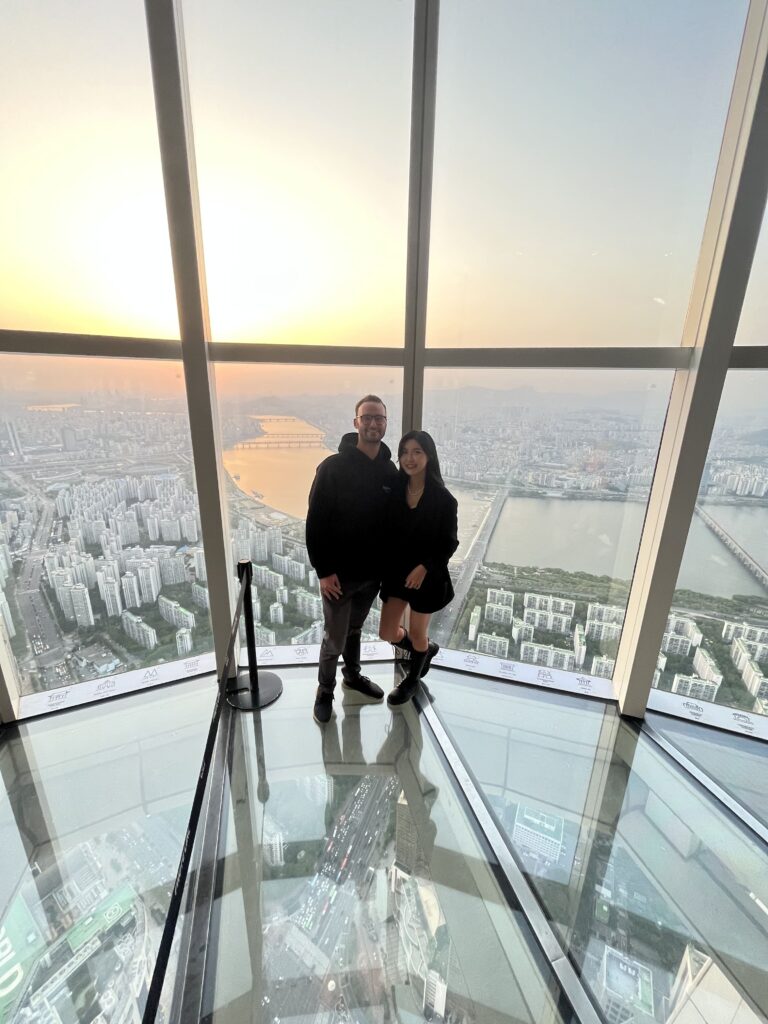Update July 2025: The new Korean President will return to the Blue House, so it will no longer be open to the public for the time being.
TL;DR 🏛️ Cheong Wa Dae (Blue House)
🇰🇷 Presidential History – Once home to Korea’s presidents, now a stunning public site full of national pride and tradition.
🎟️ Free Entry – No cost, but online reservation is required (except sometimes for foreign visitors—check first!).
🚇 Easy to Reach – Short walk from Gyeongbokgung Station or a quick hop by bus.
🏞️ Peaceful Grounds – Stroll through scenic gardens, traditional buildings, and picture-perfect views of Bugaksan Mountain.
📸 Best in Spring or Fall – Cherry blossoms in April and fiery foliage in October? Yes, please.
👟 Pro tip – Wear comfy shoes and bring ID—there’s a bit of walking and light security.
Nestled against the scenic backdrop of Bugaksan Mountain, the Blue House—known locally as Cheong Wa Dae (청와대)—has long stood as a symbol of South Korea’s political history and architectural elegance. Once the official residence of the nation’s presidents, this iconic site is now open to the public, offering a unique glimpse into Korea’s modern heritage.
🏛️ A Brief History of the Blue House

The site of the Blue House has a rich and layered history:
- Joseon Dynasty Era: Originally served as a royal garden.
- Japanese Occupation: Transformed into the Governor-General’s residence.
- Post-1948: Became the official presidential office and residence following Korea’s independence.
- 2022: President Yoon Suk-yeol relocated the presidential office to Yongsan, opening Cheong Wa Dae to the public for the first time in 74 years.
The name “Blue House” comes from its iconic roof, made of over 150,000 traditional Korean blue tiles that symbolize peace and prosperity.
📍 Address & Contact
- Address (English): 1 Cheongwadae-ro, Jongno-gu, Seoul
- Address (Korean): 서울특별시 종로구 청와대로 1 청와대
- Website: www.opencheongwadae.kr
- Phone (Inquiries): +82-2-1330
🎟️ Visiting Information
🕒 Operating Hours
- March to November: 09:00 – 18:00 (Last admission: 17:00)
- December to February: 09:00 – 17:30 (Last admission: 16:30)
📅 Holidays
- Closed on Tuesdays
- Note: If Tuesday is a public holiday, the closure shifts to the next business day.
💵 Admission & Reservations
- Fee: Free
- Reservation: Required via the official website
(Foreign tourists may sometimes enter without prior reservation—check current guidelines in advance)
🚶 Getting There
By Subway
- Gyeongbokgung Station (Line 3, Exit 4): Approx. 15-minute walk.
- Anguk Station (Line 3, Exit 1): Approx. 20-minute walk.
By Bus
- From Gyeongbokgung Station, take bus numbers 1711, 1020, 7018, 7016, 7022, or 7212 to the Hyoja-dong stop.
By Taxi
- Show or say: “청와대로 1, 종로구” or input “Cheong Wa Dae” into navigation apps like Uber or Kakao Taxi.
Parking
- No parking on-site. Nearest public lot is at Cheongwadae Sarangchae, approx. 5 mins away.
🏞️ What to See

Whether you’re into architecture, history, or just looking for peaceful vibes in the heart of the city, the Blue House has something to offer. Here are the highlights:
🏛️ Main Office Building
This is the heart of Cheong Wa Dae—the former presidential office. With its signature blue-tiled roof and traditional Korean design blended with modern touches, it symbolizes the country’s leadership and national identity. While you can’t go inside, you can get a close look and snap great photos from the plaza in front.
🎴 Reception Halls
One of the most elegant stops is Yeongbingwan, the main reception hall used for official events and welcoming foreign dignitaries. The architecture is both grand and refined, showcasing Korea’s hospitality and cultural pride. You’ll also see other reception spaces that echo the grace and tradition of Korean aesthetics.
🌳 Gardens
The grounds are beautifully landscaped with seasonal flowers, pine trees, ponds, and stone paths. It’s a serene space perfect for slow walks, with Bugaksan Mountain providing a stunning natural backdrop. In spring, cherry blossoms are in full bloom; in autumn, the leaves turn fiery red and gold.
🖼️ Exhibitions
Inside various buildings around the complex, you’ll find rotating exhibitions that highlight different aspects of Korea’s modern history, presidential archives, and cultural heritage. Some also include multimedia presentations and artifacts related to past presidents and major moments in Korean politics.
🕰️ Best Times to Visit

🌸 Spring (April)
- Cherry blossoms and fresh blooms make for breathtaking views.
🍁 Autumn (Late September – November)
- Vibrant foliage creates postcard-perfect backdrops.
☀️ Summer (June – August)
- Lush scenery, but go early to beat the heat.
❄️ Winter (December – February)
- Peaceful and beautiful with a dusting of snow.
Weekday vs. Weekend
- Weekdays are quieter. Weekends are more crowded but still enjoyable.
📝 Tips for Visitors
- Bring a valid passport or ID.
- Dress comfortably and wear walking shoes.
- Food and sharp objects are prohibited.
- Be prepared for light security screening.
- Tours are self-guided, with occasional multilingual guides available.
Visiting Cheong Wa Dae is like stepping through Korea’s living political history—blending national pride, traditional architecture, and beautiful natural surroundings. It’s a must-see whether you’re a history buff or just looking for a unique cultural stop in Seoul. If you’re interested in exploring more attractions, check out my post on the Lotte World Tower. Curious about nightlife? Check out my Seoul nightlife guide.



